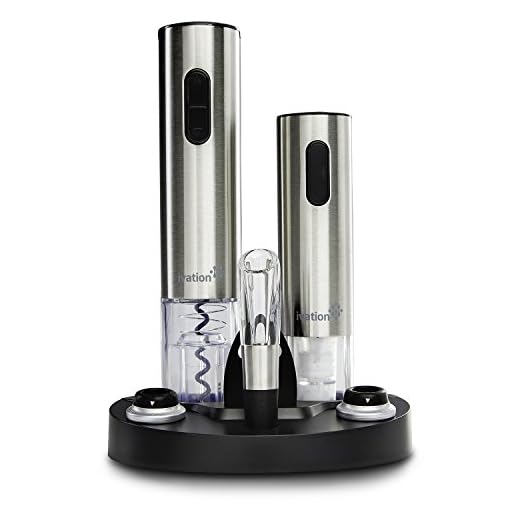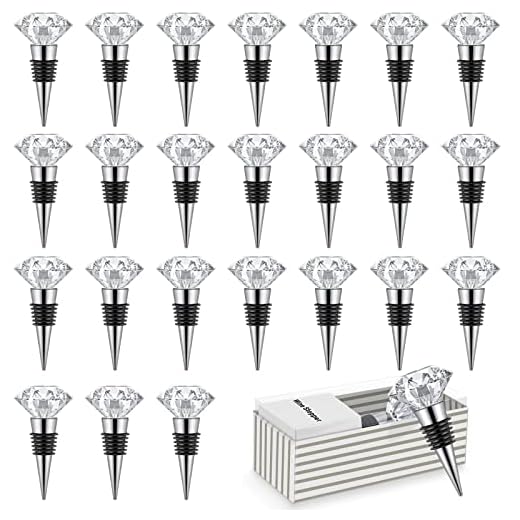



Once you uncork a bottle, the clock starts ticking. Generally, opened bottles of this type maintain their prime quality for about 3 to 5 days, depending on various factors. If you store it properly, you can enjoy the delightful flavors and aromas for a bit longer.
To maximize longevity, re-cork the bottle tightly and store it in the refrigerator. Cooler temperatures slow down oxidation, which is the main culprit behind flavor deterioration. If you have a vacuum pump, using it can further extend the life of your opened bottle by removing excess air.
Be mindful of the varietal; lighter styles, such as Sauvignon Blanc, tend to lose their freshness more quickly than richer alternatives like Chardonnay. Always rely on your senses–if it smells off or has an unusual taste, it’s best to discard it. Enjoy your selections while they’re at their best!
Optimal Duration for Enjoying Opened Bottles
Once uncorked, a bottle retains its best characteristics for about three to five days. Proper storage is key to maximizing this timeframe.
Here are some practical tips to extend the life of your opened bottle:
- Seal the bottle tightly with its original cork or a wine stopper.
- Store upright to minimize oxidation.
- Keep in a cool, dark place, ideally in the refrigerator.
For even greater longevity, consider using a vacuum pump to remove air from the bottle. This can help preserve the freshness and flavor profile for an additional couple of days.
Regularly check the aroma and taste before consuming more. If the scent turns sour or it tastes off, it’s best to discard it. Trust your senses; they are your best guide.
Understanding the Shelf Life of Opened White Wine
Once you have uncorked a bottle, it typically remains enjoyable for about 3 to 5 days. To preserve the flavor and aroma, store it in the refrigerator with the cork securely in place. This cooler environment slows oxidation, which can alter the wine’s profile.
For optimal preservation, consider using a vacuum pump to remove air from the bottle. This technique can extend its lifespan by an additional couple of days. Alternatively, utilizing specialized wine preservation systems can further enhance longevity.
Pay attention to any changes in aroma and taste. An off-putting smell or a significant drop in flavor indicates that the liquid has passed its prime. When in doubt, trust your senses. If it doesn’t taste right, it’s best to discard it.
Different varieties may have slightly varying durations. Lighter styles with higher acidity tend to last longer than richer, creamier options. Always keep track of the specific characteristics of the bottle you’ve opened.
In summary, proper storage and monitoring can significantly influence your enjoyment of an opened bottle. With the right approach, you can make the most of your experience, savoring every sip while it’s still at its best.
Factors Influencing the Longevity of Opened White Wine
Temperature plays a significant role in determining how well a bottle preserves its quality once it’s been uncorked. Ideally, store it in a cool environment, around 45°F to 55°F (7°C to 13°C). A warmer setting accelerates oxidation, which can ruin the flavor.
Oxygen exposure is another critical factor. After removing the cork, the liquid interacts with air, leading to oxidation. To minimize this, consider using a vacuum pump to remove excess air or transfer the contents into a smaller container to reduce the wine’s surface area.
Closure Type
The type of closure also impacts preservation. Bottles sealed with a screw cap tend to maintain freshness longer than those with corks, as corks can allow more air to enter. If possible, choose screw-cap options for extended enjoyment.
Wine Quality
The initial quality of the bottle matters. Higher-quality options often contain better preservatives and have a more robust flavor profile, allowing them to last longer once opened. On the other hand, inexpensive varieties may not hold up as well over time.
Finally, consider the style of the beverage. Crisp, acidic varieties typically remain enjoyable for a few days, whereas richer, oak-aged selections may last a bit longer. Always trust your senses; if it smells or tastes off, it’s best to discard it.
Signs That Your White Wine Has Gone Bad
Check for an off smell, which may resemble vinegar or a musty odor. A fresh bottle should exude fruity and floral notes. If it’s no longer pleasant, it’s likely spoiled.
Observe the color. If it has turned darker or shows brownish hues, oxidation has occurred. A crisp, pale yellow or green tint indicates freshness.
Texture Changes
Take a sip. If the taste is overly sour or flat, the flavors have deteriorated. A lively and zesty sensation signifies that it’s still enjoyable.
Physical Appearance
Look for sediment or cloudiness. While some wines may naturally have sediment, excessive cloudiness can indicate spoilage. A clear appearance is preferable.
Optimal Storage Conditions for Opened White Wine
Keep the bottle upright to minimize exposure to air. This helps reduce oxidation, preserving the flavor profile for a longer period. Temperature is critical; aim for a cool environment between 45°F to 65°F (7°C to 18°C), with 50°F (10°C) being ideal. Avoid fluctuations, as they can negatively impact the beverage’s quality.
Use a cork or a specialized wine stopper to seal the bottle tightly after each pour. This reduces the amount of oxygen entering the bottle. If available, consider a vacuum pump to extract air, further extending its longevity.
Light and Humidity Considerations
Store the bottle away from direct sunlight and fluorescent lights. UV rays can degrade the wine, affecting taste and aroma. A dark space or a wine fridge is preferable. Humidity levels should be around 50-70% to keep the cork moist, preventing it from drying out and allowing air to seep in.
Duration for Optimal Enjoyment
Typically, you can enjoy an opened bottle within 3 to 5 days, but under optimal conditions, some varieties may last up to a week. Monitor closely for any changes in aroma or flavor, and consume while still fresh to fully appreciate its character.
Best Practices for Extending the Freshness of Opened White Wine
Use a vacuum pump to remove excess air from the bottle. This method significantly slows down oxidation, preserving the flavor profile. Make sure to store the bottle upright to minimize surface area exposure to air.
Consider using inert gas wine preservers. These products create a protective layer over the liquid, preventing oxygen from altering its characteristics. Just a few sprays before sealing the bottle can make a noticeable difference.
Keep the temperature consistent. Ideally, store the bottle in a refrigerator or wine cooler. Fluctuating temperatures can negatively affect the integrity of the liquid.
Choose the Right Closure
Re-seal the bottle with its original cork if possible. For better results, you can use a wine stopper designed to create an airtight seal. Ensure it’s clean and free from any contaminants that might taint the flavors.
Monitor Consumption
Plan to finish the bottle within a few days to a week. If you often find yourself with leftover liquid, consider purchasing half-bottles or smaller formats. This way, you can enjoy the freshness without worrying about waste. For those with pets, you might want to check the best dog food for delicate stomach uk to ensure you have quality options for your furry friend as you enjoy your beverage.
When to Discard Opened White Wine: A Practical Guide
The optimal timeframe to discard a bottle that has been uncorked typically falls within 3 to 5 days, depending on various factors. If the bottle has been stored correctly and shows no signs of spoilage, it may still be enjoyable during this period.
Key Indicators for Discarding
Monitoring specific signs can help determine whether the liquid has deteriorated:
- Visual Changes: Look for cloudiness or sediment that wasn’t present before.
- Odor: A vinegar-like or off-putting smell is a clear warning sign.
- Taste: If it tastes flat or sour, it’s best to dispose of it.
Storage and Handling Recommendations
To maximize the shelf life of opened bottles, adhere to these practices:
| Storage Method | Recommended Action |
|---|---|
| Refrigeration | Always refrigerate after opening. |
| Seal | Use a vacuum pump or the original cork to limit exposure to air. |
| Upright Position | Store the bottle upright to minimize contact with oxygen. |
Adhering to these guidelines will ensure your opened bottles remain as enjoyable as possible for the days following uncorking. If in doubt, it’s best to err on the side of caution and discard any questionable bottles.








